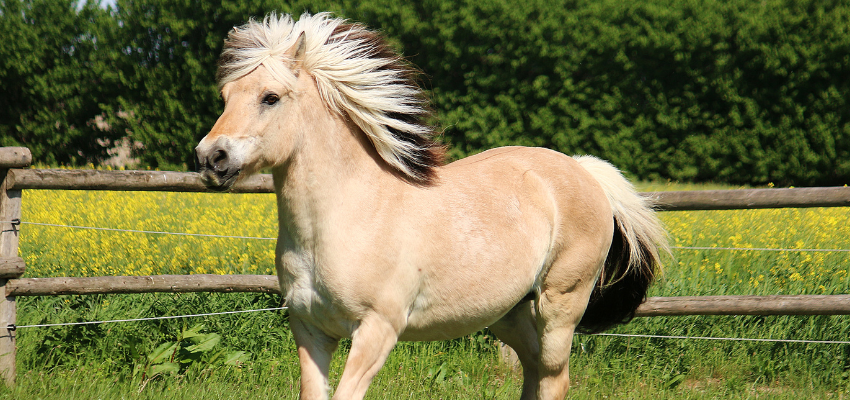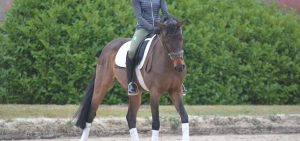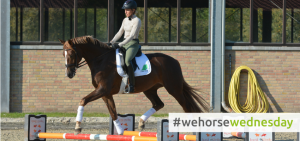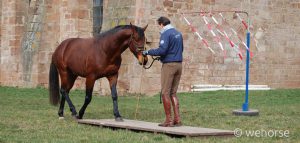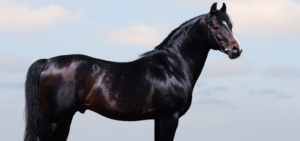The Fjord horse is a popular leisure and sport horse. In this article, you will learn all about its history, origin, appearance, character, lifespan, breed-specific diseases, care, feeding, suitable disciplines, and costs. Enjoy reading!
Fjord Horse at a Glance
In this profile, you will find all important information about the Norwegian Horse:
| Characteristic | Details |
| Height at withers | 135 – 150 cm |
| Weight | 400 – 500 kg |
| Lifespan | 25 – 30 years |
| Coat Colors | Dun |
| Character | Intelligent, eager to learn, friendly, good-natured, balanced, calm |
| Gaits | Walk, trot, canter |
| Characteristics | Spacious, energetic, clear rhythm, sure-footed |
| Suitable for | Dressage, jumping, leisure, driving |
History and Origin
The Fjord horse, also recognized as the Norwegian Fjord horse, finds its origins in the western coastal region of Norway, specifically in Vestland. Owing to Norway’s sparse and rocky landscape, this breed exhibits remarkable robustness and adeptly adapts to extreme weather conditions.
In their historical context, Vikings initially brought Celtic ponies from their raids in England and Scotland to the mainland. Subsequently, these ponies interbred with local horses, paving the way for the ancestors of today’s Fjord horses. Notably, as the original Fjord horses stood only at a height of about 125 cm, breeders in the 19th century intentionally crossbred them with Døle horses, a Norwegian draft horse breed, aiming to enhance their size and strength.
Furthermore, since the character of these early horses did not entirely meet the desired standards, breeders have been cultivating Fjord horses in purebred lines, avoiding crossbreeding with other breeds, since 1907. Significantly, the founding sire of the Fjord horse as we recognize it today was the breeding stallion “Njal”. He, along with his notable offspring “Bergfast”, “Hakon”, “Jarl”, and “Øjarblakken”, established the most crucial stallion lines, thus shaping the breed’s modern lineage.
Appearance
Exterior: The Fjord horse has a compact and strong build. It has a muscular back, sloping shoulders, a wide chest, and a well-muscled croup. The short to medium-length strong neck is set high. The head is characterized by a straight to slightly concave nasal line, a broad forehead, small ears, and large, expressive eyes.
Coat Colors: The Norwegian breed is distinctive for its coat color: It’s a dun, including brown, grey, red, light, and white dun. It also has a dark eel stripe extending from the tail to the mane, wild markings on the legs, and a two-colored black-and-white mane and tail.
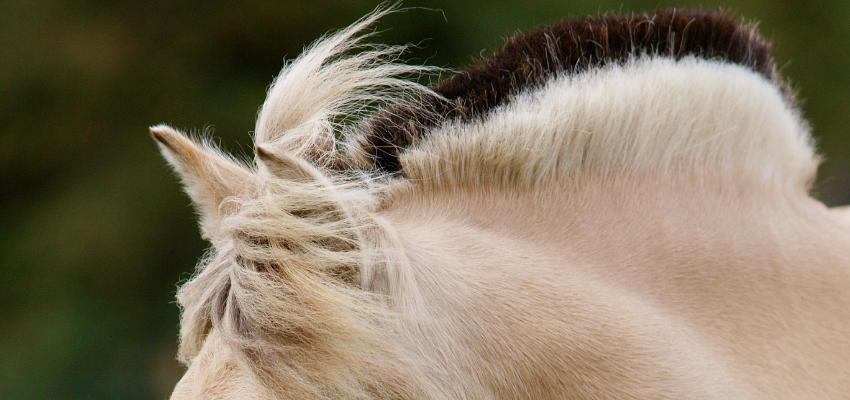
Does Every Fjord Horse Have a Standing Mane?
No, a Fjord horse’s mane naturally grows long and falling. It only has a standing mane if the owner cuts it. Often it is cut so that the outer lighter hairs are shorter than the inner darker hairs.
Personality & Character
The Fjordi is known to be friendly and good-natured. It is intelligent and eager to learn and is appreciated for its calm, balanced nature and composure. This makes it an ideal partner for both experienced riders and beginners.
Is a Fjord Horse Suitable for Children?
Due to its size of 135 to 150 cm and its friendly and balanced nature, the Norwegian Horse is excellent for children.
How Long Does a Fjord Horse Live?
A horse of this breed is generally very robust and has a long lifespan. A healthy Fjord horse can live between 25 and 30 years.
Breed-Specific Diseases
The Norwegian Horse may be prone to these diseases:
- Laminitis: An inflammation of the hoof laminae in the toe wall area, causing swelling and circulatory disturbances.
- Sweet Itch: An allergic skin reaction, often caused by the bites of certain insects, leading to severe itching.
- Mud Fever: A skin condition affecting the fetlock joints, characterized by redness, swelling, and sometimes lameness.
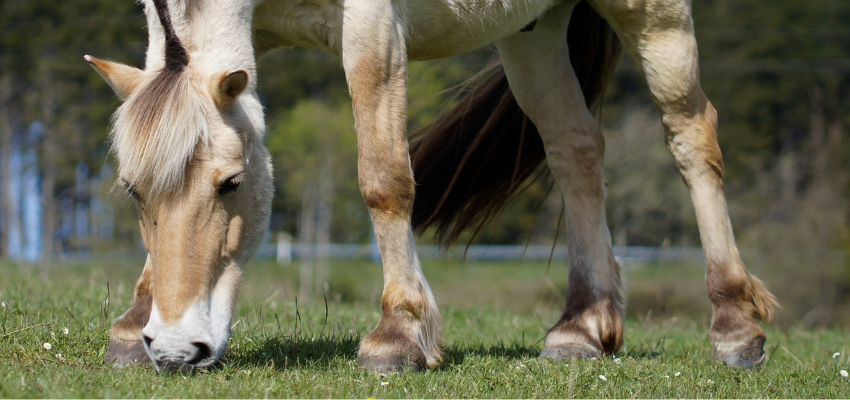
Appropriate Care
Due to its origin, a Fjordi is very robust and can cope with extreme weather conditions without needing a blanket. Like any other horse breed, it requires ample space and exercise to stay happy and healthy. Therefore, keeping it in a mud-free open stable with a sufficiently large and dry shelter is ideal. However, you can also keep it in a box with several hours of daily turnout in a large paddock or pasture. A Fjord horse should never be kept alone and should always have contact with other horses.
Appropriate Feeding
The Fjord horse is typically an easy keeper. It is accustomed to surviving on very little and sparse food and is therefore an extremely efficient feeder. Pay attention to this when feeding. Make sure to feed a sufficient amount of roughage in the form of high-quality hay or haylage. If your horse needs concentrated feed, adjust the amount to your horse’s energy requirements. Your veterinarian or a feed consultant can advise you on whether your horse needs mineral supplements, which ones, and how much.
Gaits
The Fjord horse has the gaits of walk, trot, and canter. The gaits are spacious, energetic, clear in rhythm, and with good impulsion from the hindquarters. It is also very sure-footed.
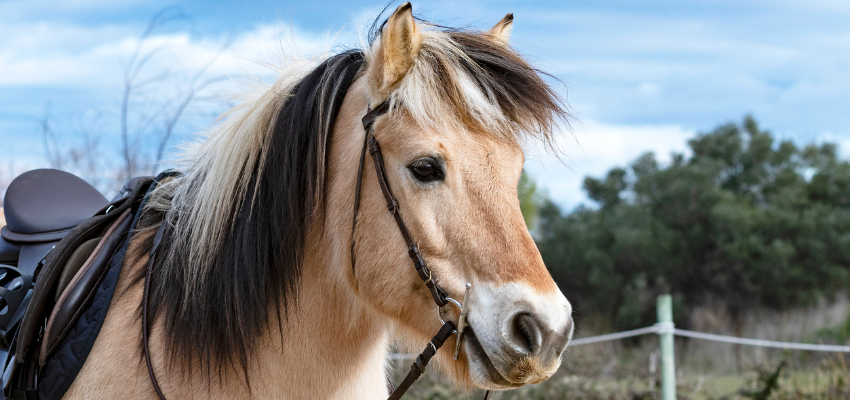
Suitable Disciplines
The Fjord is versatile. It is a reliable partner for leisure riding and driving. But it also performs well in dressage and jumping for leisure riders.
How Much Does a Fjord Horse Cost?
The price of these Norwegian Horses can vary. It depends on age, training level, pedigree, and health condition. Prices can range from 4,000 to 10,000 dollars.
What is the Difference Between a Norwegian and a Fjord Horse?
The distinction between a “Norwegian” and a “Fjord horse” predominantly resides in the terminology utilized to delineate the same breed. Originating from Norway, the Fjord horse is celebrated for its unique appearance and adaptability. Specifically:
- Norwegian Fjord Horse: Internationally, this is the accurate and official term to identify the breed. It highlights the horse’s roots in Norway, underlining its geographic and cultural heritage. In essence, this name is not only formal but also reflects a broader understanding of the breed’s origins.
- Vestlandhest or Fjordhest: Utilized predominantly in Norway, these names bear significant local value. “Vestlandhest” is translated as “horse from Vestland,” pinpointing a specific region in Norway, whereas “Fjordhest” straightforwardly means “Fjord horse.” Consequently, these terms provide a more localized context, enriching the breed’s historical background.
- Other Common Names: Diverse regions, including Germany and other parts of Europe, often colloquially refer to the Fjord horse as “Norwegian,” “Fjording,” or simply “Fjord.” These names are more informal and are typically used by horse enthusiasts and the general public. To clarify, while these terms are less formal, they are nonetheless widely recognized and contribute to the breed’s popularity across various cultures.
Conclusion
In summary, the Fjord horse is a breed that stands out for its unique appearance, calm and strong character, and versatility. It is suitable for a variety of disciplines and makes a wonderful partner for both children and adults.

